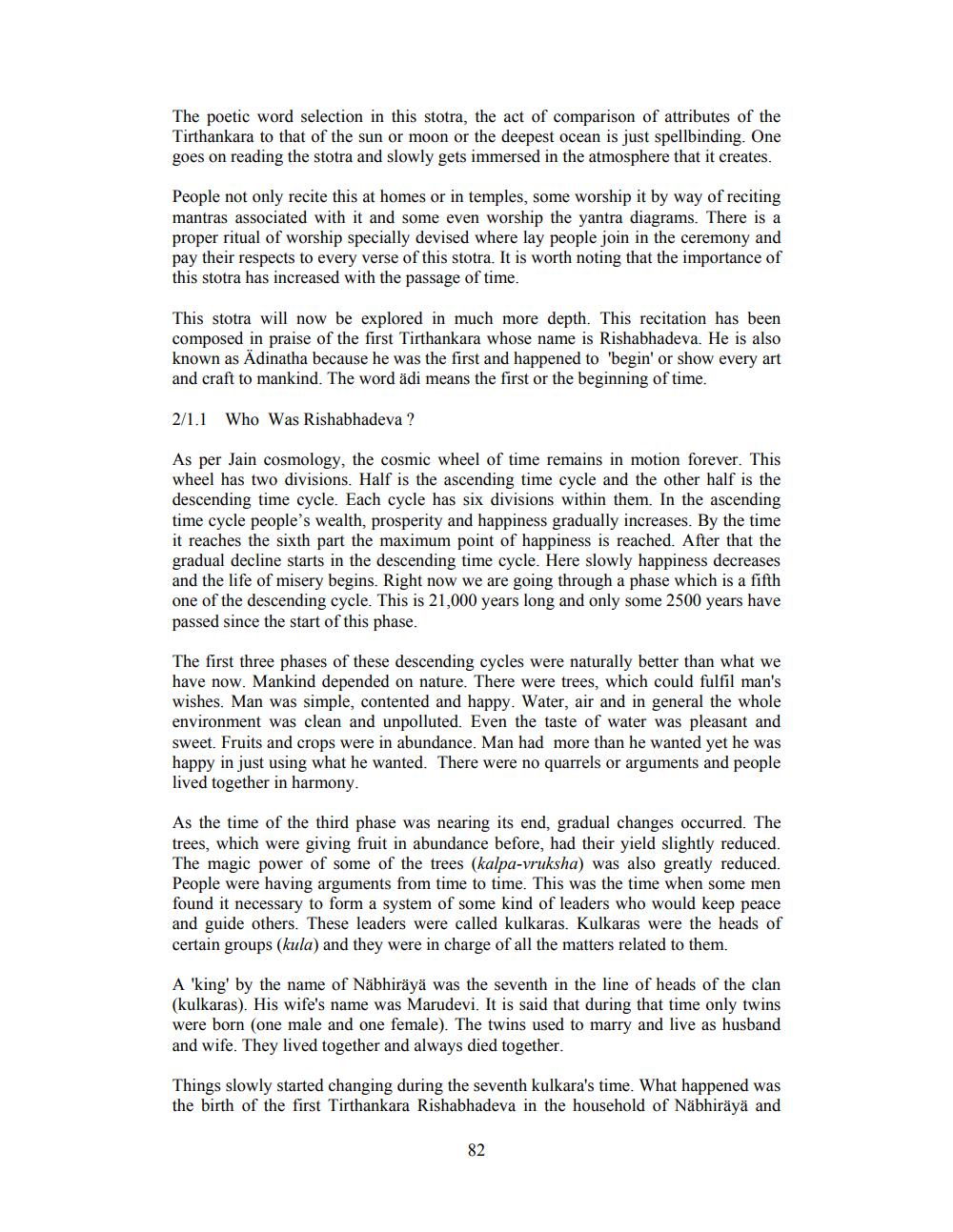________________
The poetic word selection in this stotra, the act of comparison of attributes of the Tirthankara to that of the sun or moon or the deepest ocean is just spellbinding. One goes on reading the stotra and slowly gets immersed in the atmosphere that it creates.
People not only recite this at homes or in temples, some worship it by way of reciting mantras associated with it and some even worship the yantra diagrams. There is a proper ritual of worship specially devised where lay people join in the ceremony and pay their respects to every verse of this stotra. It is worth noting that the importance of this stotra has increased with the passage of time.
This stotra will now be explored in much more depth. This recitation has been composed in praise of the first Tirthankara whose name is Rishabhadeva. He is also known as Adinatha because he was the first and happened to 'begin' or show every art and craft to mankind. The word ädi means the first or the beginning of time.
2/1.1 Who Was Rishabhadeva ?
As per Jain cosmology, the cosmic wheel of time remains in motion forever. This wheel has two divisions. Half is the ascending time cycle and the other half is the descending time cycle. Each cycle has six divisions within them. In the ascending time cycle people's wealth, prosperity and happiness gradually increases. By the time it reaches the sixth part the maximum point of happiness is reached. After that the gradual decline starts in the descending time cycle. Here slowly happiness decreases and the life of misery begins. Right now we are going through a phase which is a fifth one of the descending cycle. This is 21,000 years long and only some 2500 years have passed since the start of this phase.
The first three phases of these descending cycles were naturally better than what we have now. Mankind depended on nature. There were trees, which could fulfil man's wishes. Man was simple, contented and happy. Water, air and in general the whole environment was clean and unpolluted. Even the taste of water was pleasant and sweet. Fruits and crops were in abundance. Man had more than he wanted yet he was happy in just using what he wanted. There were no quarrels or arguments and people lived together in harmony.
As the time of the third phase was nearing its end, gradual changes occurred. The trees, which were giving fruit in abundance before, had their yield slightly reduced. The magic power of some of the trees (kalpa-vruksha) was also greatly reduced. People were having arguments from time to time. This was the time when some men found it necessary to form a system of some kind of leaders who would keep peace and guide others. These leaders were called kulkaras. Kulkaras were the heads of certain groups (kula) and they were in charge of all the matters related to them.
A 'king' by the name of Näbhiräyä was the seventh in the line of heads of the clan (kulkaras). His wife's name was Marudevi. It is said that during that time only twins were born (one male and one female). The twins used to marry and live as husband and wife. They lived together and always died together.
Things slowly started changing during the seventh kulkara's time. What happened was the birth of the first Tirthankara Rishabhadeva in the household of Näbhiräyä and
82




